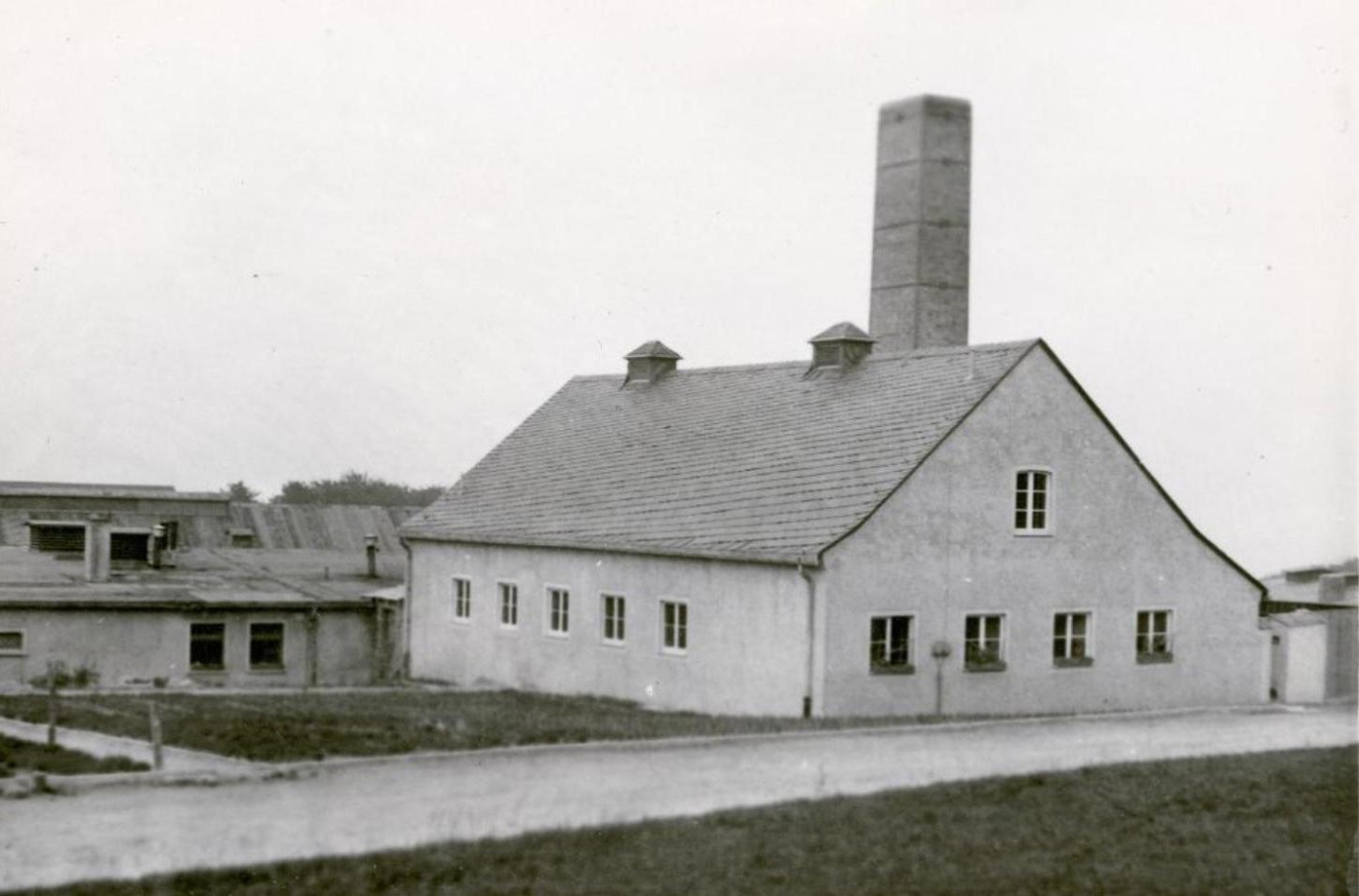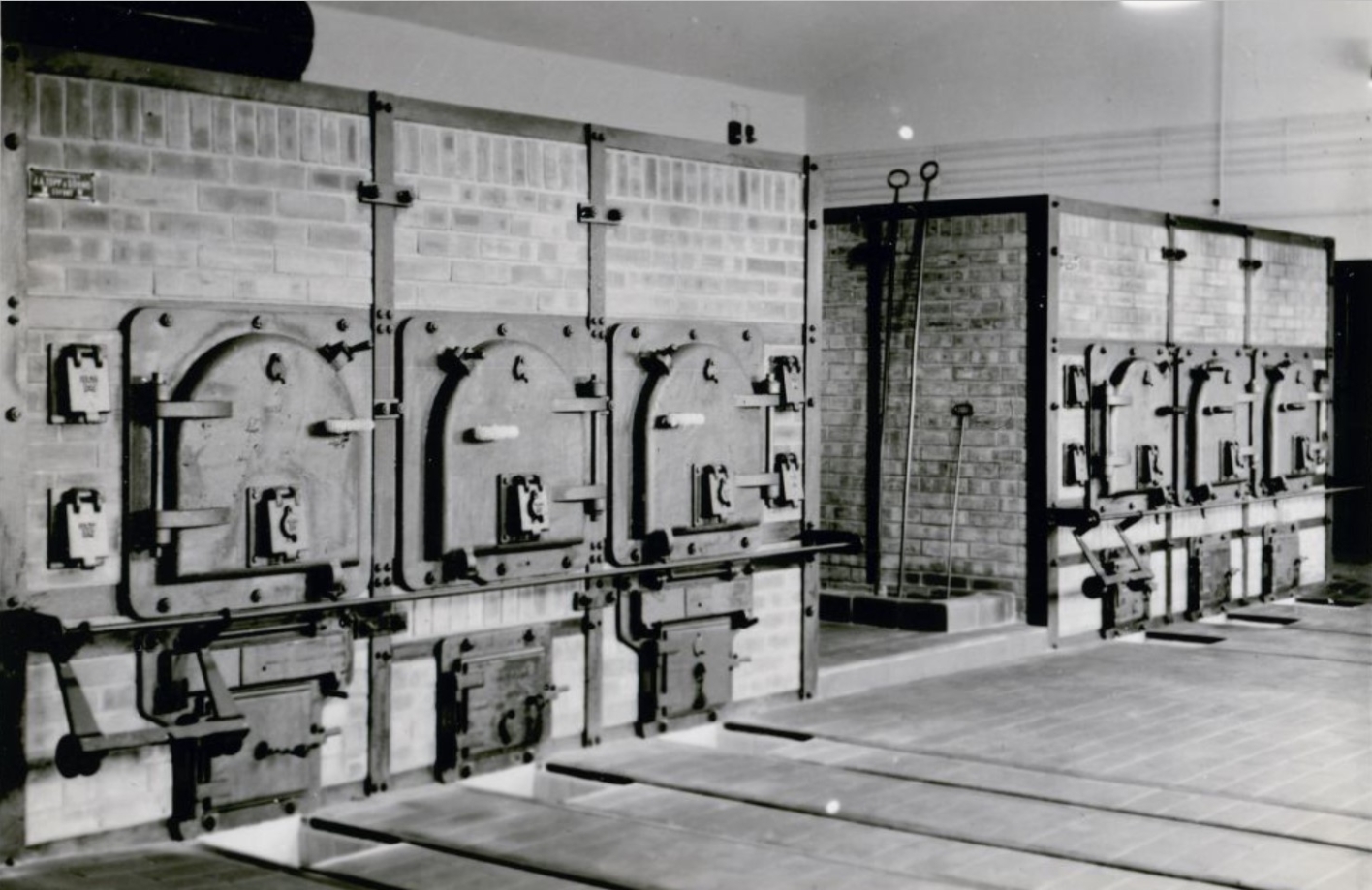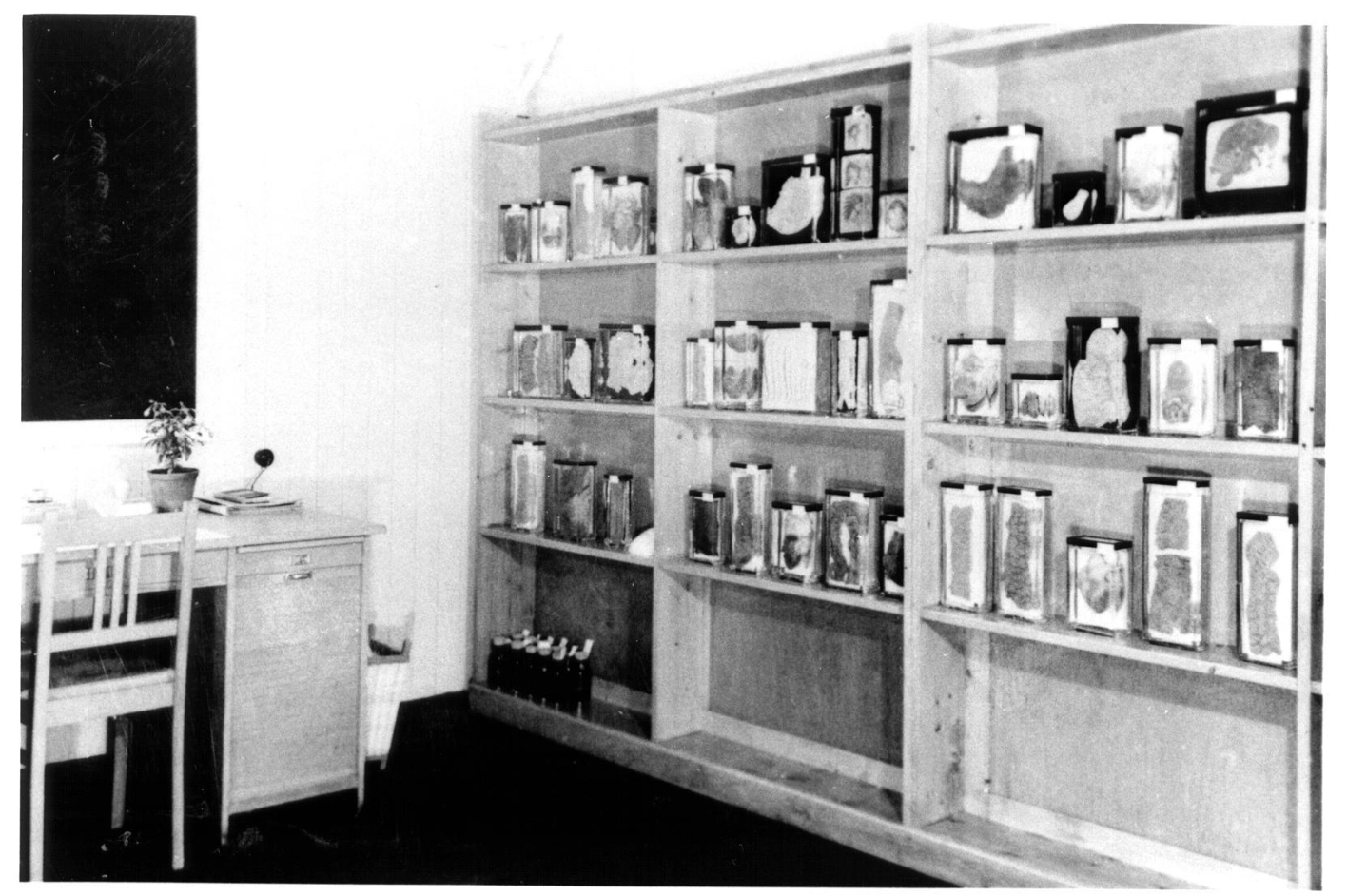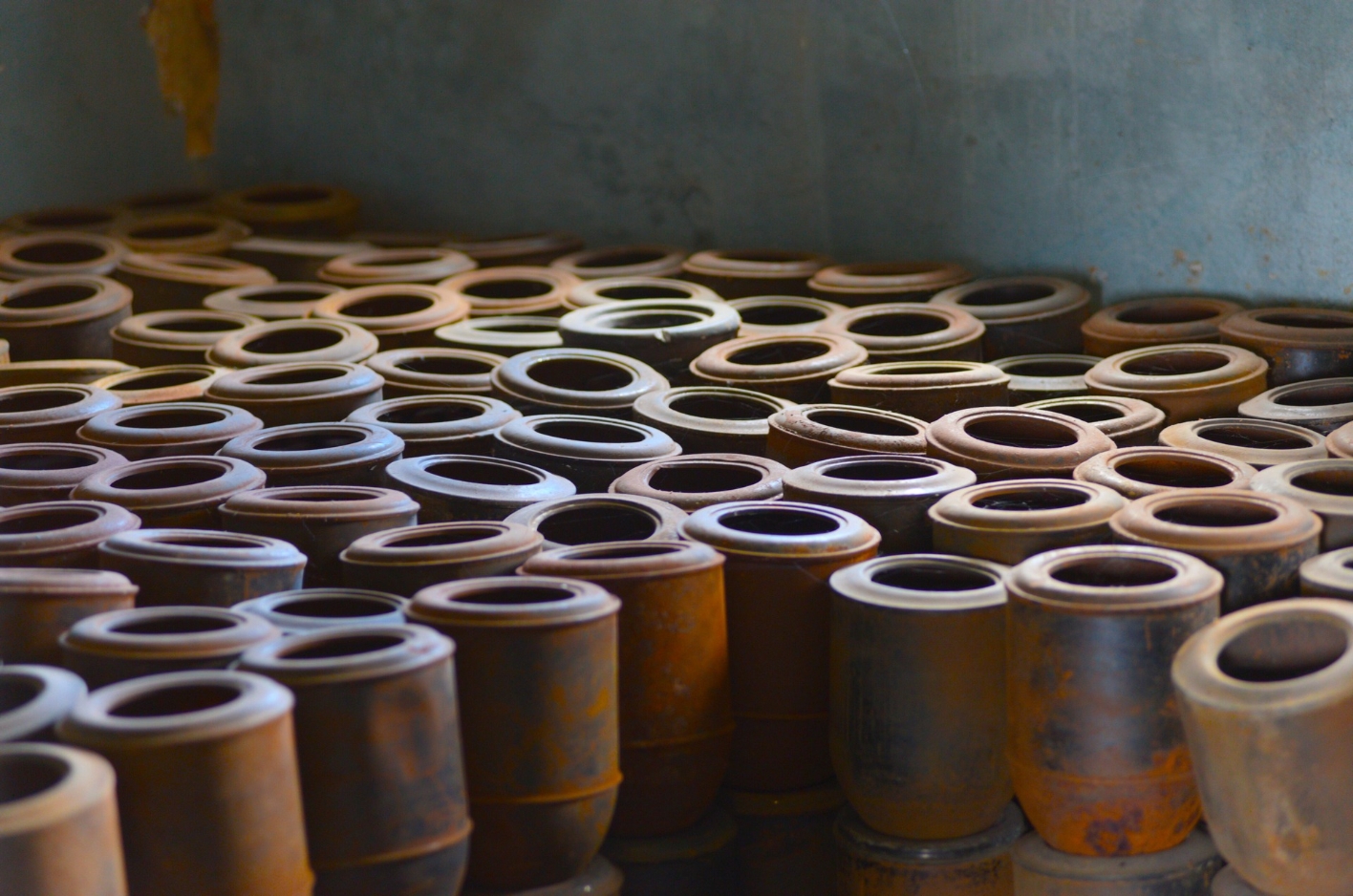




Up until 1940, the SS had incinerated those who perished at the camp at the Weimar city crematorium. The Erfurt-based company Topf & Söhne developed special ovens for the Buchenwald concentration camp, which were based on trash incinerators. Ten ovens of this same kind were later installed at the concentration and extermination camp of Auschwitz-Birkenau. These ovens made it possible for the SS to burn a great number of bodies in a short period of time. From 1943 onward, the ashes of most of the dead were dumped into the surrounding area like garbage.
A side wing of the crematorium contained two pathology dissecting rooms. Here, the golden teeth of the deceased were extracted, and organs were removed as anatomical specimens, which were provided to universities. Another specialty was the production of macabre gift items, which members of the SS bestowed on one another:
The morgue beneath the crematorium was one of the execution sites of the camp. Here the SS strangled some 1,100 men, women, and teens on wall hooks, usually Gestapo detainees but also concentration camp inmates.
In the yard at the back, the SS stored its mobile show gallows, with which they carried out public hangings outside the camp for the Gestapo.

